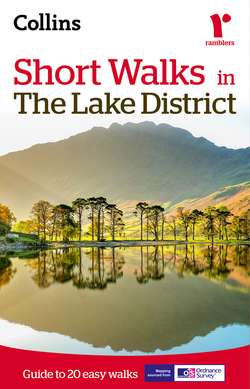Читать книгу Short walks in the Lake District - Collins Maps - Страница 9
Wildlife in the Lake District
ОглавлениеBecause of the huge variety of landscapes to be found in a relatively small area, there are diverse habitats for flora and fauna to thrive. Many different types of grassland, upland heath and mires are designated areas of habitat conservation and protected plant species include juniper and the slender green feather-moss. There are several National Nature Reserves, over 100 Sites of Special Scientific Interest and many other conservation areas.
There are different types of grassland to be found, the species supported being determined by the quality of the soil and the climate. The old fashioned hay meadow is rich in various species of wild flowers and butterflies.
The moorlands of the mountains and fells are carpeted in plant species such as heather and sphagnum moss, commonly called peat moss due to its abundance in bogs and mires. Red grouse can be found on the moorland.
The Lake District supports several endangered species of fish. The vendace was to be found at 4 locations in Britain – two in Scotland and in Bassenthwaite Lake and Derwent Water. However there has not been a recorded sighting in Bassenthwaite since 2001 and they have died out on the Scottish lochs leaving only Derwent Water. The schelly is still to be found in Brothers Water, Haweswater, Red Tarn and Ullswater, and the arctic char, which, although still rare, is a little more commonplace being found in several of the lakes. Cormorant nesting was prevented by repeated disturbance in 1999 and 2000 in Haweswater in an attempt to protect the schelly. Goosander, goldeneye, tufted duck, dipper, grey wagtail and sandpiper can be seen on the lakes and waterways.
The Environment Agency introduced new fisheries bylaws in 2002 regarding the use of freshwater fish as bait in an attempt to protect the fish stocks. The introduction of non-native fish can lead to devastation of native species because of competition for food and spread of disease. A major problem has been found with ruffe which eat the eggs of vendace – they have a long incubation period and are therefore particularly vulnerable.
Numbers of native red squirrels have been dwindling throughout Britain over the last 100 years ever since the grey squirrel arrived from North America. They are more timid and smaller than the greys and lose in the competition for food. A sighting is always an exciting occurrence.
In 2001 ospreys returned to the Lake District after 150 years. A pair spend their winters in Africa but have returned each Spring since then to breed on the hillside around Bassenthwaite Lake. There are now two viewpoints at Dodd Wood north of Keswick, as they recently moved the site of their nest to the opposite side of the lake – a very unusual occurrence as the same site can be used by generations of osprey.
Haweswater was home to England’s only pair of Golden Eagles but the female disappeared in 2004 and has not been seen since although sightings of the male are still made.
